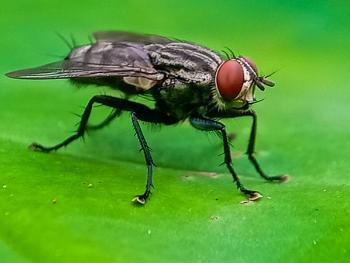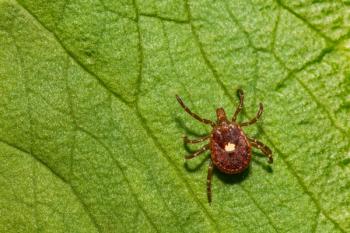
Visual guide to help researchers track Asian longhorned tick
A team from Rutgers has created a pictorial resource that aims to help veterinary researchers monitor the movement of these potentially deadly invasive ticks and distinguish them from similar but mostly harmless species.
A shot of the Asian longhorned tick, a species that has recently invaded the United States. (Photo courtesy of James Gathany/CDC)Ever since the
Getting a handle on this tick species has been difficult so far, largely because it is nearly identical to the rabbit tick (Haemaphysalis leporispalustrisis) and the bird tick (Haemaphysalis chordeilis), both of which are mostly harmless to humans, according to
“To begin to understand the threat posed by Asian longhorned ticks in the U.S., we need to know the full extent of its distribution,” lead author of the guide Andrea Egizi, PhD, a visiting professor at Rutgers' Center for Vector Biology and a research scientist with the Monmouth County Tick-borne Disease Program, tells Rutgers Today. “We made this key so that researchers across the country have an easier way to identify [longhorned ticks].”
When these ticks actually got here
Thanks to the new guide, researchers now know that the Asian longhorn tick was actually spotted in the U.S. a lot earlier than previously believed. “… the Asian longhorned tick has been present in New Jersey since at least 2013, but that first discovery, found on a dog in Union County, was initially mistaken for a rabbit tick,” Dina Fonseca, PhD contributing author of the guide and director of the Rutgers Center for Vector Biology, told Rutgers Today.
The guide, published in
“This tool will also help to improve our understanding of the biology and ecology of native Haemaphysalis species, which have been relatively poorly studied compared with other native ixodids,” the researchers say in the guide.
Although the Asian longhorned tick is largely considered a livestock pest, it can cause severe fever with thrombocytopenia syndrome as well as other diseases in humans, according to the
“Careful monitoring to detect the potential arrival of other members of this genus is encouraged. Should additional Haemaphysalis species establish themselves in North America, this key will require revision,” the researchers conclude.
Newsletter
From exam room tips to practice management insights, get trusted veterinary news delivered straight to your inbox—subscribe to dvm360.




